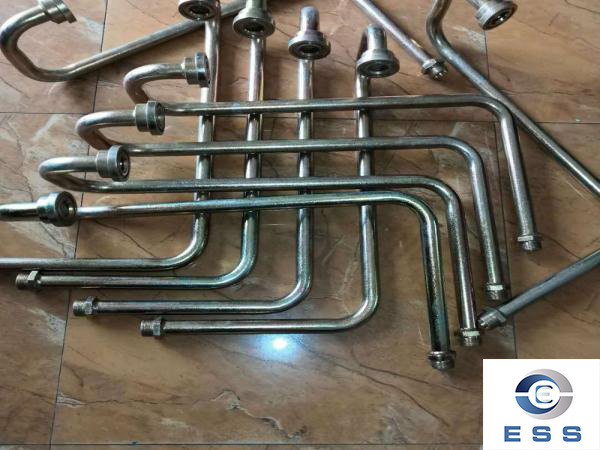Technical requirements for hydraulic tubes

Selection of hydraulic tube materials
Hydraulic tubes are generally made of carbon steel, alloy steel, stainless steel and other materials. The material determines the pressure bearing capacity and service life of the hydraulic tube. Commonly used hydraulic tube materials are as follows:
1. Carbon steel hydraulic tube: generally used for applications with general temperature, pressure, flow and bending angle, the price is relatively low.
2. Alloy steel hydraulic tube: suitable for working conditions under high pressure, high temperature and harsh environment, with higher pressure resistance and corrosion resistance, but the price is more expensive.
3. Stainless steel hydraulic tube: suitable for corrosion resistance and high temperature and high pressure environment, better than carbon steel and alloy steel pipes, but the price is also higher.
Selection of hydraulic tube size
The selection of hydraulic tube size should be determined according to factors such as liquid flow, pressure, flow rate and system design. The size of hydraulic tubes is usually expressed by outer diameter (OD), inner diameter (ID) and wall thickness. Under normal circumstances, the use of a suitable diameter can effectively improve the operating efficiency of the system.
Hydraulic tube connection methods
Hydraulic tube connection methods include threaded connection, flange connection, clamp connection and welding connection. The selection of different connection methods needs to consider the use scenarios and requirements of the pipeline. Common threaded connections are mostly used for low-pressure transmission, flange connections are used in high-pressure and large-flow systems, clamp connections are used for large-diameter pipeline connections, and welding connections are mainly used in special occasions such as high-pressure pipelines and high-temperature pipelines.
Pressure resistance of hydraulic tubes
Pressure resistance is one of the important indicators of hydraulic tubes, and its pressure resistance directly determines the safety performance of the hydraulic system. The pressure resistance of hydraulic tubes is affected by multiple factors such as material, size, thickness, etc., so when choosing hydraulic tubes, it is necessary to understand their pressure bearing capacity and service life.
Service life of hydraulic tubes
The service life of hydraulic tubes is mainly affected by factors such as wear, oxidation, corrosion, fatigue, etc. Under normal use, its life is generally about 5 years. When selecting, attention should be paid to the use conditions and operating requirements of the pipes to extend the service life of the hydraulic tubes.
Safety issues of hydraulic tubes
When choosing hydraulic tubes, safety issues are very important. The quality, material, size, connection method, installation, etc. of hydraulic tubes all affect the safe operation of the hydraulic system. If the hydraulic tube does not meet the relevant standards and requirements, it may cause leakage, breakage, explosion and other accidents, which should be paid enough attention.
Conclusion
Hydraulic tube is a very important component of the hydraulic system, and plays an irreplaceable role in the stability and safety of the system. Choosing the right hydraulic tube can not only improve the efficiency and safety performance of the system, but also reduce costs and maintenance difficulties.













 Eastern Steel Manufacturing Co.,Ltd not only improve product production and sales services, but also provide additional value-added services. As long as you need, we can complete your specific needs together.
Eastern Steel Manufacturing Co.,Ltd not only improve product production and sales services, but also provide additional value-added services. As long as you need, we can complete your specific needs together.










